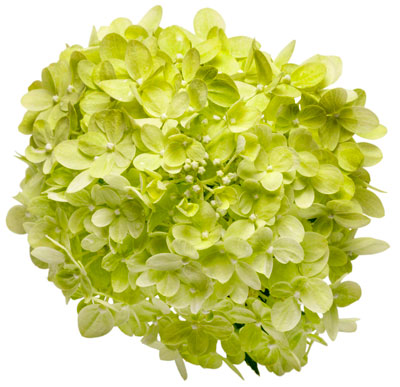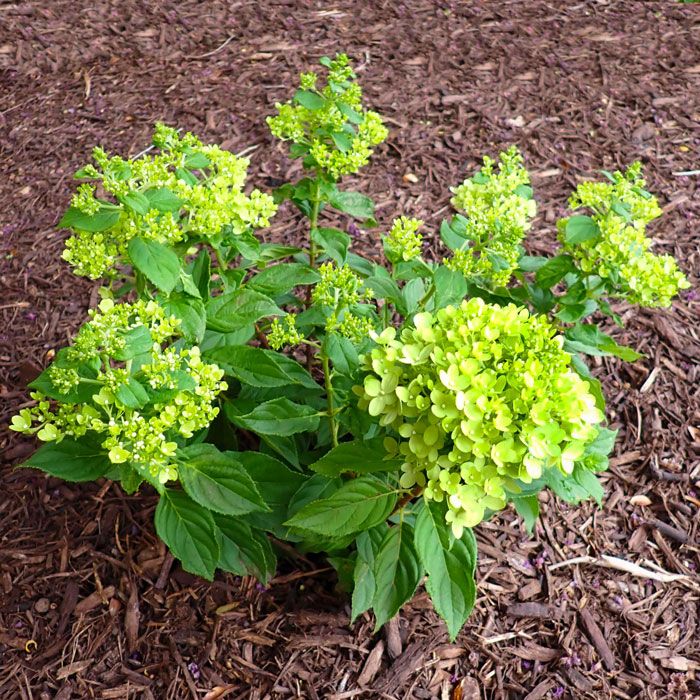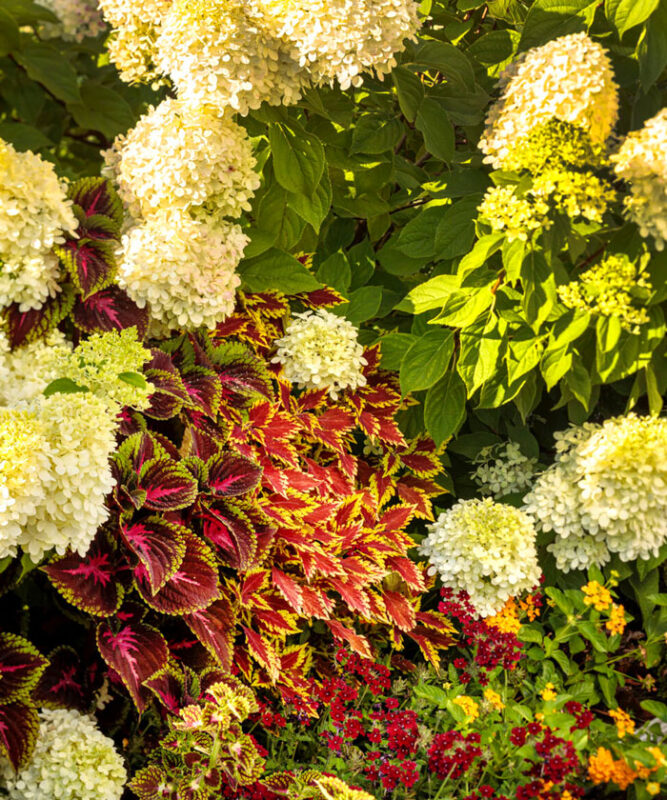‘Little Lime’ Hydrangea – by Steve Huddleston
Lime green is a color that cools off and refreshes a hot summer landscape, and that’s just what ‘Little Lime’ hydrangea does. A smaller version of its eight-foot-tall cousin, ‘Limelight,’ ‘Little Lime,’ when fully loaded with flowers, makes a big statement in the garden.
‘Little Lime’ is a deciduous shrub that reaches a manageable size of 3 to 5 ft. tall and wide, assumes an upright-mounded shape and maintains a compact form. ‘Little Lime’ has strong stems that hold the flower heads upright with no drooping. This variety sports baseball- to softball-sized clusters of sterile flowers called “panicles” that bloom mid-summer on into the fall. The panicles first appear as lime green, lighten to a soft white and then change to pink and burgundy in the fall. Flower panicles can be cut for fresh arrangements or for drying or may be left on the shrub where they often persist into winter. ‘Little Lime’ has medium green, oval-shaped leaves with serrated margins; these leaves, which can be as long as 2-1/2 in., are attractive during the growing season but produce very little fall color.

‘Little Lime’ prefers compost-enriched, moist and well-drained soil with a pH that is acidic to neutral. Plant in full to partial sun; afternoon shade is beneficial. Mulch with an organic mulch such as wood chips, pine straw or oak leaves. Fertilize in early spring with a granular, slow-release fertilizer that will boost flower production (something higher in phosphorus than nitrogen) and make a second application of the same fertilizer in late summer to encourage more blooms. ‘Little Lime’ blooms on new wood, which means the best time to prune or shape is late winter/early spring before new growth emerges.
Use ‘Little Lime’ in a bed mixed with other blooming or evergreen shrubs and perennials, as a hedge along a fence or property line, as an accent shrub, or even in a container on the patio. The lime green color of the flowers mixes well with flowers that are white, blue, magenta, purple, pink, red, and even orange. In particular, ‘Little Lime’ would look great in combination with purple, pink, or magenta crape myrtles, ‘Mystic Spires’ salvia, ‘John Fanick’ phlox, Mexican bush sage, or Turk’s cap – or in front of a hedge of dwarf Burford hollies.
Here’s what you’ll want to know…
• The botanical name is Hydrangea paniculata ‘Jane’ but it is sold under the trade name Little Lime®.
• It is the product of an open pollination between Hydrangea paniculata ‘Limelight Variegated’ and an unknown selection of Hydrangea paniculata.
• Belongs to the Hydrangeaceae family.
• The species is native to China and Japan.
• Hardy in USDA Plant Hardiness Zones 3-8.
• Flowers attract butterflies and bees.
• Toxic to dogs, cats, and horses.


